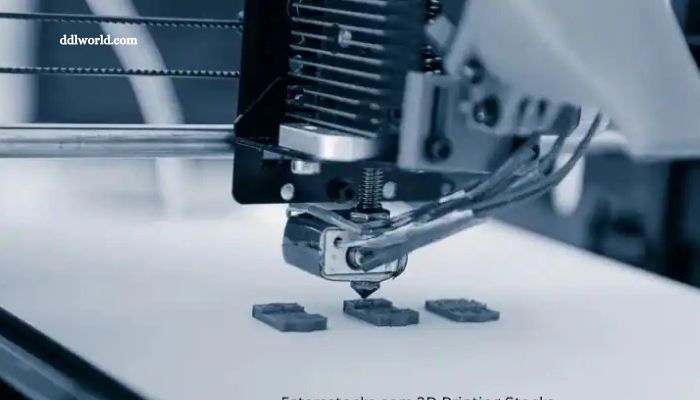Exploring 3D Printing Stocks: A Comprehensive Guide by 5StarsStocks.com

3D printing has transformed manufacturing and technology, driving significant advancements across various industries. This cutting-edge technology is reshaping production methods, reducing costs, and enabling customization at unprecedented levels. As the market for 3D printing expands rapidly, investors increasingly recognize the potential for substantial growth within this sector. Exploring 3D printing stocks offers an opportunity to participate in a market that blends innovation with financial promise.
Drawing on expertise from 5starsstocks.com, a trusted source for uncovering promising investment opportunities, this analysis highlights key trends, leading companies, and factors influencing the industry’s trajectory. Understanding these elements provides valuable insights for making informed investment decisions in this dynamic and revolutionary market space.
Read More: icryptox.com DeFi: An In-Depth Guide
Understanding 3D Printing Technology
3D printing, also known as additive manufacturing, creates three-dimensional objects by layering material based on digital designs. This versatile technology finds applications across diverse industries, including aerospace, healthcare, automotive, and consumer goods. Its ability to fabricate complex shapes with precision and minimal waste positions it as a revolutionary manufacturing method.
Current Trends in 3D Printing
The 3D printing market has experienced rapid expansion in recent years, with projections estimating a global market value exceeding $41 billion by 2026, growing at a compound annual growth rate (CAGR) of approximately 14.4%. Key drivers include:
- Customization: Enables tailored products to meet specific customer needs.
- Cost Efficiency: Minimizes material waste and reduces labor expenses.
- Rapid Prototyping: Accelerates product development cycles through fast iteration.
Investment Potential in 3D Printing Stocks
The transformative nature of 3D printing presents significant opportunities for investors. Platforms like 5starsstocks.com offer valuable guidance in identifying companies leading this dynamic sector. Below are several noteworthy 3D printing firms to watch:
Leading 3D Printing Companies to Consider
- Stratasys Ltd. (NASDAQ: SSYS): A prominent player offering a broad portfolio of printers, materials, and cloud services, serving both industrial and consumer markets.
- 3D Systems Corporation (NYSE: DDD): An industry pioneer with diversified products, including materials, software, and healthcare solutions focused on innovation.
- Desktop Metal, Inc. (NYSE: DM): Specializes in high-performance metal 3D printing, catering to growing industrial demands.
- Markforged, Inc. (NYSE: MKFG): Known for printing composites and metals, positioned to capture manufacturing sector interest.
- Materialise NV (NASDAQ: MTLS): Provides custom solutions primarily in medical and automotive sectors, strengthened by strategic partnerships.
Evaluating 3D Printing Stocks with 5starsstocks.com
Investors benefit from comprehensive research and ratings on 5starsstocks.com, which delivers:
- Expert Analysis: In-depth insights on market trends and technology developments.
- Stock Ratings: Performance data and forecasts to support informed decision-making.
- Investment Strategies: Timely advice on optimal buy and sell opportunities.
Risks of Investing in 3D Printing Stocks
Potential rewards come with inherent risks, including:
- Market Volatility: Emerging markets often experience sharp price swings.
- Technological Change: Continuous innovation is essential to maintain competitiveness.
- Increasing Competition: Growing industry entrants may impact profit margins.
The Future of 3D Printing
The sector’s outlook remains promising, with advancements such as bioprinting, new material developments, and integration of artificial intelligence poised to drive further growth and reshape manufacturing landscapes.
Frequently Asked Questions
What is 3D printing?
3D printing, or additive manufacturing, is a process of creating three-dimensional objects by layering materials based on digital models. It allows for precise, customized manufacturing across various industries.
Why invest in 3D printing stocks?
Investing in 3D printing stocks offers exposure to a rapidly growing and innovative sector with strong potential for long-term returns, driven by advances in technology and expanding market applications.
Which industries benefit most from 3D printing?
Aerospace, healthcare, automotive, consumer goods, and manufacturing sectors are some of the primary beneficiaries of 3D printing technology due to its customization and efficiency advantages.
What are some leading 3D printing ?
Notable companies include Stratasys Ltd. (SSYS), 3D Systems Corporation (DDD), Desktop Metal, Inc. (DM), Markforged, Inc. (MKFG), and Materialise NV (MTLS).
What risks should investors consider?
Risks include market volatility, rapid technological changes, and increasing competition within the 3D printing industry, which could impact stock performance.
How can I research 3D printing stocks?
Websites like 5starsstocks.com provide expert analyses, stock ratings, and investment strategies to help investors make informed decisions in the 3D printing market.
What is the future outlook for 3D printing?
The future is promising, with innovations like bioprinting, new materials, and AI integration expected to drive growth and expand the technology’s applications.
Conclusion
3D printing is no longer a futuristic concept—it’s a transformative force reshaping industries and creating exciting opportunities for forward-thinking investors. As the market continues to evolve, companies leading innovation in this space are well-positioned for significant growth.
With expert insights and reliable stock evaluations from platforms like 5starsstocks.com, investors can make informed decisions and capitalize on the potential of this dynamic sector. While risks remain, the long-term outlook for 3D printing stocks is highly promising, making it a compelling area to watch in any diversified investment strategy.





